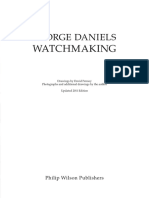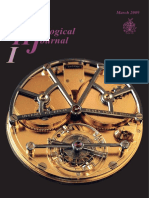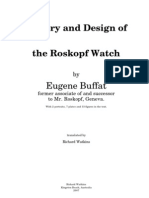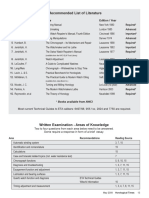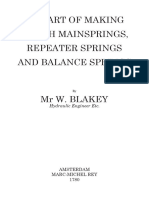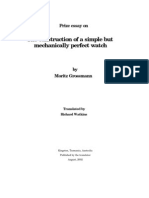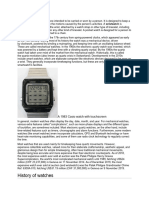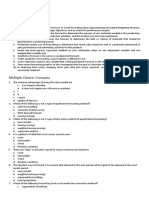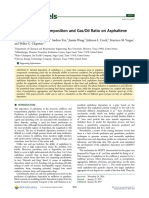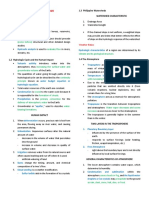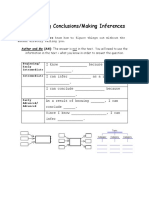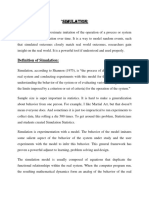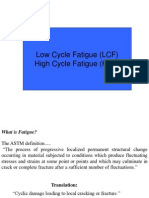A P P L I C AT I O N S O F C O N T R O L
The Tourbillon and How It Works
MARK DENNY
he tourbillon is a mechanical device that was invented to improve the precision of old-fashioned pocket watches. These devices continually rotate the escapement, balance wheel, and spring to compensate for bias due to gravity. To help visualize the operation of a tourbillon, we recommend that the reader view the videos and animations of tourbillons that are available on YouTube [1][3]. The tourbillon has always been a luxury add-on for pocket watches and, more recently, wristwatches. In this article we analyze the dynamics of the tourbillon, show how it works for pocket watches, and explain why it serves no practical purpose in wristwatches. We model the physics of the mechanical watch escapement in the simplest possible manner and then show how the tourbillon modifies the escapement behavior to reduce the effect of gravity bias on the timekeeping precision of the watch. A high-quality modern mechanical watch can achieve a precision, referred to as rate error in the horological community, of 1 s per day, while a less expensive mechanical watch may attain a precision of 5 s per day. To place these figures in perspective, the precision of an inexpensive quartz watch is less than .5 s per day. Measuring the precision of a mechanical timepiece is not quite as obvious at it may seem because the variation in watch speed depends on various factors, such as temperature and spatial orientation. Temperature compensation has been the subject of much thought and experimentation over the centuries. Consequently, the construction of a modern mechanical watch is such that, over a limited temperature range, the watch is insensitive to variations in ambient temperature. Variation in both accuracy and precision, that is, in watch speed and rate error, due to the orientation of the gravitational field is a characteristic of oldfashioned pocket watches. Much of the history of clock and watch evolution has been driven by the desire to improve accuracy [4], [5]. Technical analyses of timepiece performance tend to concentrate on individual components of a given mechanism, such as the escapement [6], [7]. In this article we focus on the tourbillon. For a pocket watch we show how the day-to-day variation depends on its spatial orientation, and we show how this variation is reduced by the tourbillon. Since it is technically difficult to construct a tourbillon, these devices are extremely expensive and thus are
associated with only the best quality timepieces. See Two Centuries of Tourbillons for a discussion of the status of tourbillon timepieces within the horological community.
ELEMENTARY ESCAPEMENT
Figure 1 shows the hairspring and balance wheel of a clock escapement. The balance wheel oscillates about its center under the influence of the hairspring. Friction acting on the axle located at the center of the spring dampens wheel oscillations. In a real pocket watch, the balance wheels center of mass is not located at the axis of rotation; this imbalance is represented by the mass m on the balance wheel. The escapement wheel and pallet shown in Figure 1 are treated as massless. The effect of the clock escapement is represented by an impulse applied to the wheel whenever the angle u is zero and increasing, so that the regulating mechanism of Figure 1 exhibits the phase plot sketched in Figure 2. Although friction dampens the oscillation, the
Side View Top View Balance Wheel Hairspring m k mg R
Pallet
Equipment Wheel
Digital Object Identifier 10.1109/MCS.2010.936291
FIGURE 1 Balance wheel and hairspring. The pocket watch balance wheel is shown as the black circle of radius R with the point mass m. This mass captures the fact that the center of mass of the wheel is not located at the wheel center, where the axle is located. Gravity acts on the mass in the direction indicated. The escapement assembly is inclined to the vertical by the tilt angle w. The hairspring, which is represented by the gray spiral and has constant stiffness k, applies torque to the balance wheel whenever the angle u is nonzero. The watch escapement provides an impulse to the wheel by increasing its angular velocity by V whenever the mass passes u 5 0 moving to the right. For convenience, the watch is oriented so that the escapement acts at u 5 0. The escapement wheel and pallet are also shown.
JUNE 2010
1066-033X/10/$26.002010IEEE
IEEE CONTROL SYSTEMS MAGAZINE 19
Authorized licensed use limited to: University of Michigan Library. Downloaded on May 19,2010 at 05:49:38 UTC from IEEE Xplore. Restrictions apply.
�Two Centuries of Tourbillons
braham-Louis Breguet (17471823), a watchmaker who was legendary in his own lifetime, invented the tourbillon, which is French for whirlwind, in 1795 and patented the invention in Paris in 1801 [S1]. As the watchmaker of kings and the king of watchmakers, Breguet sought the highest possible accuracy in his timepieces. This period was the age of accurate watchmaking, spurred by the need for estimating longitude at sea. Breguets watches were so sought after that, even during his lifetime, his work was frequently forged. In those days, watches were carried vertically in a vest pocket or were laid flat on a table. The rate difference between these two positions was quite noticeable and adversely affected both accuracy and precision. Breguet realized that the effects of gravity were responsible for at least part of the rate variation of his pocket watches. His solution to this problem is a continuously rotating escapement by means of a tourbillon. The difficulty of constructing a tourbillon meant that few were made and only for the most expensive watches. Breguet died in 1823 having sold only 35 tourbillon watches. The vintage period of watchmaking covers the period from 1800 to 1945, during which time there have been perhaps 250 master watchmakers. All together, these watchmakers made an estimated 600850 tourbillon movements. Consequently, tourbillons have always been exclusive. The difficulty of construction is in part due to the small size required of tourbillons. Because the rotating cage absorbs energy from the mainspring, minimizing this energy loss requires that the tourbillon weight be minimized. A modern high-quality tourbillon is handmade
from lightweight yet durable metals and contains between 40 and 90 parts weighing a total of 0.20.6 g, with a cage size of perhaps 8 mm. Watchmakers need special tools to construct parts to these tight tolerances. A master watchmaker can produce only 20 or 30 tourbillon timepieces per year. Tourbillons were first put into wristwatches in 1986. As noted in the main text, tourbillons are redundant in wristwatches because the natural wrist movements throughout the course of a day provide the same averaging of gravitational errors as provided by a tourbillon. Therefore, why bother placing such an intricate device in a wristwatch? The answer is purely as a demonstration of watchmaking virtuosity and as an expression of exclusivity. Tourbillons in wristwatches are always on display, visible through the glass either on the front or back of the watch. Within the last five years, two-axis tourbillons have been made and installed in wristwatches. These devices rotate about one axis, which itself then rotates about a second, perpendicular, axis. Three-axis tourbillon watches are now on the market. The typical cost of a wristwatch with such refinements exceeds a quarter million dollars, even though the refinements do not serve much practical purpose. Semi-automation now increases the annual production of tourbillon watches to over 1000, which brings down costs for a single-axis tourbillon watch to a mere US$25,000.
REFERENCE
[S1] Breguet depuis 1775. [Online]. Available at: http://www.breguet. com/eng
impulse of the escapement boosts it, resulting in a stable limit cycle. The escapement regulates the flow of energy supplied to the clock. This energy is delivered in discrete impulses, each of which boosts the angular speed of the balance wheel by V, under the action of the clock escapement. In Figure 1 we assume that the pocket watch is subjected to
gravity in the direction shown and that the plane of the watch is inclined at the tilt angle w relative to the vertical. As shown below, the equations of motion depend on the gravity direction and thus the direction of gravity influences the accuracy of the clock. To derive the equations of motion for the balance wheel, we initially assume that the escapement delivers no impulse to the wheel. In this case the wheel angle u satisfies the equation $ # u 1 bu 1 a 2u 1 b 2cos w sinu 5 0, where (1)
a2 5
k , I 1 mR2
b2 5
mgR I 1 mR2
(2)
FIGURE 2 Phase diagram of the balance wheel oscillation for the assembly shown in Figure 1. The angular velocity impulse V is applied to the balance wheel as the mass passes u 5 0 moving to the right.
20 IEEE CONTROL SYSTEMS MAGAZINE
I is the moment of inertia of the balance wheel and spring, k is the spring constant, and g is the acceleration due to gravity. To simplify the analysis, we assume that the oscillation angle u is small so that a linear approximation is appropriate. This assumption is valid for pendulum clocks but not, in general, for watches. In Nonlinear Solution we extend the
JUNE 2010
Authorized licensed use limited to: University of Michigan Library. Downloaded on May 19,2010 at 05:49:38 UTC from IEEE Xplore. Restrictions apply.
�Nonlinear Solution
ere we derive an approximate solution to (1) that does not involve linearization. For simplicity we set the friction term to zero. We seek a periodic solution for the balance wheel oscillation of the form u ( t ) 5 u 0cos vt, and employ an approximation technique known as harmonic balance [10], [11]. From the identity [12] exp ( ix siny ) 5 a Jn ( x ) exp ( iny ) ,
n5 2` `
v5
a2 1
2J1 ( u 0 ) 2 b cos w. u0
(S3)
(S1)
where Jn ( x ) is an ordinary Bessel function, it follows that sin ( u 0cos vt ) 5 2J1 ( u 0 ) cos vt 1 H ( u 0 ) . (S2)
H ( u 0 ) represents higher frequency terms, which, applying the harmonic balance approximation, we neglect. This procedure is reasonable for systems with periodic motion dominated by a single frequency. Substituting u ( t ) and (S2) into (1) with b 5 0 we obtain a solution with frequency
Thus the frequency for large-amplitude oscillations depends on the amplitude u 0, a characteristic of nonlinear dynamics, but only weakly in this case, and the dependence disappears for small amplitudes. Thus (S3) reduces to (4) with b 5 0. As an example, suppose that a2 5 10 b2 and u 0 5 90o. Then the oscillation frequency differs from the oscillation frequency in the low-amplitude case by 1.3%. To illustrate that the harmonic balance method works well for this system, consider the case of a simple pendulum, with b 5 a 5 w 5 0 and b2 5 g/l, where l is pendulum length. The linear approximation for a simple pendulum estimates the pendulum period to within 1% of its true value for amplitudes up to u 0 5 23o. The harmonic balance approximation (S3) predicts the period to within 1% of its true value up to amplitudes of u 0 5 120o [11].
calculation to larger amplitudes. For small angles, sin u < u, and thus the solution to the linearized (1) is given by [8] 1 u ( t ) 5 u 0 expa2 btbcos ( vt 2 c ) , 2 (3)
If a limit cycle exists then, after transients decay, we expect xn to become independent of n for large n, in which case x5 V . 12r (7)
where u 0 and c are the initial oscillation amplitude and phase, respectively, and the oscillation frequency v is v 5 "a 2 1 b 2cos w 2 1b 2. 4 (4)
Assuming a small axle-friction torque coefficient b, we write (7) as # Vv , x 5 u LC < pb (8)
Equation (3) is valid when the damping is small. Note that the oscillation frequency depends on the tilt angle w. This dependence is weak because a W b for realistic parameter values, but even this weak dependence is significant for high-quality watches that are designed to be accurate timepieces. We now include the escapement mechanism by introducing an impulse once per cycle to the balance-wheel angular speed. Some watches and clocks have two impulses per cycle. These impulses produce the tick-tock sound of mechanical timepieces, and thus this simplified watch mechanism produces only ticks. We say that the wheel angle u is zero at times tn , where vtn 5 2np and n is an integer. We denote the interval between ticks by t 5 tn11 2 tn. From (3), including the escapement action, we have # # 1 0 u ( tn11) 0 5 0 u ( tn ) 0 expa2 btb 1 V. (5) 2 # Adopting the notation xn 5 0 u ( tn ) 0 , r 5 exp (21/2bt ) , (5) becomes xn11 5 rxn 1 V. (6)
where the subscript denotes limit cycle. The solution to the linearized equation of motion (1) including escapement action can be obtained by applying Greens functions [7], which, for the limit-cycle oscillation angle, yields u LC ( t ) < V sin vt. pb (9)
Note that the time derivative of (9) yields the maximum # balance-wheel angular speed of (8), namely, max 3 u LC ( t )4 5 x. Next we consider the approach to the limit cycle behavior. From (6) we obtain x1 5 rx0 1 V, x2 5 r2x0 1 ( 1 1 r ) V, ( xn 5 rnx0 1 V a ri 1 ern2m.
i50 n21
(10)
Here we assume that a small disturbance e influences the balance-wheel motion at time tm , where m , n. Because
JUNE 2010
IEEE CONTROL SYSTEMS MAGAZINE 21
Authorized licensed use limited to: University of Michigan Library. Downloaded on May 19,2010 at 05:49:38 UTC from IEEE Xplore. Restrictions apply.
�2.0 Angular Speed (rad/s) 1.5 1.0 0.5 0.0 0.5 1.0 1.5 80 60 40 20 0 20 Angle () (a) 40 60 80 100
show that the balance-wheel oscillation frequency is expected to be close to the linear prediction (4). For the linearized equations, the interval between ticks, that is, the inverse of the oscillation frequency, is predicted to be 2p 2p 1 b 2 1 b 2 t5 v < a a11 a b 2 a a b cos w b. 2 2a 2 (11) Thus the presence of the tilt angle w shows that the balance wheel and escapement mechanism ticks at a rate that depends on the tilt orientation and thus gravity through the dependence of b on g. For realistic parameter values we expect b V a, and therefore this dependence is weak. Note that the interval t is largest when the watch is lying flat, that is, when w 5 90o, and smallest when it is vertical, that is, when w 5 0o. Suppose now that the pocket watch is intentionally rotated by the constant roll angle h about the balance wheel axis so that the escapement impulse no longer occurs at u 5 0 as shown in Figure 2. The resulting equation of motion is
80 40 Angle 0 40 80
10
20
30
40
50 60 Time (s) (b)
70
80
90
100
FIGURE 3 Numerical integration of the exact equation of motion (1). The escapement impulse is evident in (a) the phase plot. The impulse magnitude V is assigned an unrealistically large value to make it visible. Consequently, friction acting at the wheel axle is also made large, so that a stable limit cycle results at realistic excursion angles. (b) The time plot shows how the oscillation angle tends to a stable value. For the chosen simulation parameters, predictions of the linearized model for oscillation amplitude, frequency, and peak angular speed are close to the values shown here. Thus, the linearized model works well even at excursion angles that are well beyond the region of its validity.
r , 1, the effect of this disturbance decays as n increases, and thus the limit cycle motion is stable. The balance wheel oscillates due to the influence of the escapement with constant amplitude and period. Figure 3 shows the phase diagram and time dependence of the solution to the exact equation of motion (1) including the escapement impulse. In real timepieces this impulse is small because the effect of friction is small. Since energy dissipates at a slow rate, only a small amount of energy needs to be added by the impulse to maintain the limit-cycle motion. We choose parameters to exaggerate the effect of the impulse to make its effect apparent in Figure 3. For the parameters of this simulation, the linearized equation (1), including the escapement impulse, predicts values for the limit cycle period t, the maximum # value of u LC, and the maximum value of u LC to be 6.0 s, 73o, and 1.33 rad/s, respectively. The agreement is reasonable, considering that the angular excursion of the balance wheel, typical of balance wheels, is well beyond the region of validity of the linear approximation. Consequently, the frequency of the balance wheel is close to that predicted by the linear approximation. In Nonlinear Solution we
22 IEEE CONTROL SYSTEMS MAGAZINE
# $ u 1 bu 1 a 2u 1 b 2cos w sin ( u 2 h ) 5 0.
(12)
Applying the analysis of (1) to the linearization of (12), it follows that the solution is periodic, where the modified period is given approximately by t< 2p 1 b 2 1 b 2 a1 1 a b 2 a b cos w cos hb. a 2 2a 2 a (13)
Comparing (13) with (11) shows the influence of the roll angle h. In the next section we show that the tourbillon can remove the influence of the watch tilt and roll angles w and h on tick rate.
ADD A TOURBILLON
The function of a tourbillon is to make the roll angle h timedependent so that the b-dependent term in (13) averages to zero over a 24-hour period. Since b depends on gravity, by removing this term from (13) we are removing the influence of gravity on tick interval. A tourbillon is a cage that contains the balance wheel, hairspring, and escapement mechanism as shown in Figure 4.
JUNE 2010
Authorized licensed use limited to: University of Michigan Library. Downloaded on May 19,2010 at 05:49:38 UTC from IEEE Xplore. Restrictions apply.
�Balance Wheel
100 90
Cage
80 70 Chronometers 60 50 40 30 20 1st Place 2nd Place
Hairspring
10 27th Place 0 0 10 20 30 40 Chronometers with Tourbillons 50
Intermediate Wheel
FIGURE 4 A late 19th-century Pellaton tourbillon assembly. The cage is the three-armed structure, which is stationary, and contains the rotating balance wheel, hairspring, and escapement. The intermediate wheel engages another toothed wheel, not shown, which causes the entire cage and contents to rotate. The intermediate wheel rotation is powered by the pocket watchs mainspring, also not shown. The author is grateful to Pierre Maillard of Europa Star magazine for permission to reproduce this image.
The cage is designed to rotate about an axis aligned with the balance-wheel axle. In other words, the wheel and escapement assembly changes orientation from the angle h to the angle h 1 2p during one rotation of the cage. Therefore, if the cage rotation period is T, then the tourbillon action causes the roll angle to change as h ( t ) 5 h0 1 2pt/T, where h0 is the initial roll. Thus, over an interval of time that is much greater than T, the term cos h in (13) averages to zero. Note, however, that the derivation of (12) and (13) assumes that the roll angle h is constant. Since the time dependence of h is slow in practice, we consider these equations to remain approximately true. For example, the balance wheel oscillates several times per second, whereas the tourbillon rotates the escapement at typically once per minute. The intermediate wheel in Figure 4 is attached to another toothed wheel, not shown, which causes the cage and its contents to rotate about an axis perpendicular to the page. While rotating, the balance wheel and escapement must continue to regulate the flow of mainspring energy to maintain regular oscillation.
FIGURE 5 Tourbillon effectiveness. This graph summarizes the results of 17 sets of tests carried out using mechanical chronometers of various kinds at observatories over the period 18941945. The tests graded the performance of the timepieces, some of which were equipped with tourbillons. The vertical axis represents the number of chronometers used for each test, while the horizontal axis represents the number with tourbillons. Within each test, the chronometers are graded, with the best placed at the top. Shaded areas show the range of tourbillon-equipped-chronometer grades. Thus, for example, the test indicated by the arrow involved 32 chronometers of which 18 were equipped with tourbillons; this test graded tourbillon chronometers between second place and 27th place, out of 32. The overall results show that tourbillons do improve timepieces, because the shaded areas tend to be placed higher than the unshaded areas, but the results are not particularly impressive. Data supplied by Europa Star magazine.
WHAT DOES A TOURBILLON ACHIEVE?
By averaging the tick period (13) over the roll angle h, the tourbillon can improve the precision of the timepiece; accuracy is not affected, however. To illustrate the effect on precision, consider a thought experiment in which two identical
pocket watches, without tourbillons, are compared. First, both are flat on a table and they make the same number of ticks over a 24-hour period. Second, both are vertical and they still make the same number of ticks over 24 hours. Third, one watch is flat and the other vertical; now they make a different number of ticks in 24 hours. In this third case a tourbillon, added to each watch, would remove the 24-hour rate variation between the two watches. The variations in the rate of a single pocket watch, due to spatial orientation, are thus reduced by a tourbillon, and thus the precision of the watch (that is, its day-to-day variation) is improved if its orientation is changed only occasionally over each 24-hour test period. If, however, the orientation of the watch never changes, then the effect of gravity is constant, and the tourbillon has no effect on its precision. At the other extreme, if the position changes frequently, as happens naturally with a wristwatch, then the tourbillon is unnecessary because the large number of orientation changes achieves the same averaging effect as the tourbillon.
(continued on page 78)
JUNE 2010
IEEE CONTROL SYSTEMS MAGAZINE 23
Authorized licensed use limited to: University of Michigan Library. Downloaded on May 19,2010 at 05:49:38 UTC from IEEE Xplore. Restrictions apply.
�[21] R. K. Mehra, On the identification of variance and adaptive Kalman filtering, IEEE Trans. Automat. Contr., vol. 15, pp. 175184, 1970. [22] R. K. Mehra, Approaches to adaptive filtering, IEEE Trans. Automat. Contr., vol. 17, pp. 693698, 1972. [23] M. S. Arulampalam, S. Maskell, N. Gordon, and T. Clapp, A tutorial on particle filters for online nonlinear/non-Gaussian Bayesian tracking, IEEE Trans. Signal Processing, vol. 50, pp. 174188, Feb. 2002. [24] R. van der Merwe and E. Wan, Gaussian mixture sigma-point particle filters for sequential probabilistic inference in dynamic state-space models, in Proc. IEEE Int. Conf. Acoustics, Speech and Signal Processing (ICASSP), Hong Kong, 2003, pp. 701704. [25] S. J. Julier and J. K. Uhlmann, Unscented filtering and nonlinear estimation, Proc. IEEE, vol. 92, pp. 401422, 2004. [26] P. Houtekamer and H. L. Mitchell, Data assimilation using an ensemble Kalman filter technique, Monthly Weather Rev., vol. 126, pp. 796811, 1998.
[27] J. L. Anderson and S. L. Anderson, A Monte Carlo implementation of the nonlinear filtering problem to produce assimilations and forecasts, Monthly Weather Rev., vol. 127, pp. 27412759, 1999. [28] Y. Gao, E. J. Krakiwsky, M. A. Abousalem, and J. F. McLellan, Comparison and analysis of centralized, decentralized, and federated filters, Navigation, vol. 40, pp. 6986, Spring 1993. [29] P. D. Joseph and J. T. Tou, On linear control theory, AIEE Trans. Applicat. Ind., vol. 80, pp. 193196, 1961 . [30] M. Athans, The role and use of the stochastic linear-quadratic-Gaussian problem in control system design, IEEE Trans. Automat. Contr., vol. AC16, pp. 529552, 1971. [31] R. S. Bucy and P. D. Joseph, Filtering for Stochastic Processes with Applications to Guidance, 2nd ed. New York, NY: Chelsea Publishing, 1987.
A P P L I C AT I O N S O F C O N T R O L
(continued from page 23)
Despite this improvement in precision over 24 hours, the rate variation due to tilt angle remains over timescales that are shorter than the time it takes for the tourbillon to complete a full rotation. In this case, the term cos(h ) in (13) does not average to zero, and thus the gravity dependence remains. Therefore, the tourbillon merely masks the rate variation over long observation periods. Historically, accurate timepieces have been associated with astronomical observatories. Indeed, astronomers such as Airy have contributed to horology [7]. During the first half of the twentieth century, a series of different rate tests was conducted by many observatories using many types of timepieces, with and without tourbillons. Results are shown in Figure 5, and they display mixed results for the tourbillon. These calculations show explicitly why this is the case. Tests of tourbillon accuracy and precision produce different results depending on the test details; specifically, on how much the timepiece is moved. Test results are different because tourbillons do not correct the variation in rate that arises from timepiece orientation. Instead, they average the source of variation [9], which may or may not improve precision depending on how frequently the orientation of the watch changes. Another reason for the disappointing performance of tourbillons is that they can remove only part of the gravitational error. It is possible that the frictional torque acting on bearings depends on timepiece spatial orientation. Thus, for example, the friction parameter b may vary with tilt angle w; if so, this variation is not eliminated by the tourbillon. Bearings in highquality timepieces are usually made of jewels, such as rubies, which are hard and durable with low-friction coefficients.
observe, and the skill of the watchmaker is clearly on display. The elegance of tourbillon timepieces, combined with their expense and exclusivity due to the extreme difficulties of construction, have made these intriguing mechanical devices desirable since their invention 200 years ago.
AUTHOR INFORMATION
Mark Denny earned a Ph.D. in theoretical physics from Edinburgh University, Scotland, and then pursued research at Oxford University from 1981 to 1984. He was subsequently employed by industry, where he worked as a radar systems engineer. He has written 40 papers on radar signal processing and physics, plus four popular science books. He is semi-retired and lives on Vancouver Island.
REFERENCES
[1] Single axis tourbillon movement [Online]. Available: http://www.youtube.com/watch?v=q_bQsv 5l36k&feature=related [2] Assembly of escapement components, and their simulation [Online]. Available: http://www.youtube.com/watch?v=8RZz7jqle-A&feature=fvw [3] Multiple axis tourbillon movement [Online]. Available: http://www. youtube.com/watch?v=AWdlPMQlig4&feature=related [4] E. Bruton, The History of Clocks and Watches. London, England: Little, Brown and Company, 2000. See also http://www.timezone.com/ and links therein. [5] M. V. Headrick, Origin and evolution of the anchor clock escapement, IEEE Control Syst. Mag., vol. 22, no. 2, pp. 4152, 2002. [6] A. V. Roup, D. S. Bernstein, S. G. Nersesov, W. M. Haddad, and V. Chellaboina, Limit cycle analysis of the verge and foliot clock escapement using impulsive differential equations and Poincar maps, Int. J. Control, vol. 76, no. 17, pp. 16851698, 2003. [7] M. Denny, The pendulum clock: A venerable dynamical system, Eur. J. Phys., vol. 23, no. 4, pp. 449458, 2002. [8] T. W. B. Kibble and F. H. Berkshire, Classical Mechanics. Harlow, England: Longman, 1996. [9] J.-C. Nicolet. (2007) Europa Star [Online]. Available: http://www.europastar.com/europastar/watch_tech/tourbillon.jsp [10] D. W. Jordan and P. Smith, Nonlinear Ordinary Differential Equations. Oxford, England: Oxford Univ. Press, 1999. [11] M. Denny, Watt steam governor stability, Eur. J. Phys., vol. 23, pp. 339351, 2002. [12] E. A. Kraut, Fundamentals of Mathematical Physics. New York: McGrawHill, 1967, p. 309.
CONCLUSIONS
Given the patchy performance of tourbillons, it is reasonable to ask why they are much sought after. Tourbillon wristwatches command astonishing prices; see Two Centuries of Tourbillons. The answer lies outside the technical realm of physics and engineering. Tourbillons are fascinating to
78 IEEE CONTROL SYSTEMS MAGAZINE
JUNE 2010
Authorized licensed use limited to: University of Michigan Library. Downloaded on May 19,2010 at 05:49:38 UTC from IEEE Xplore. Restrictions apply.

